Midway up Vancouver Island, a burgundy sign beckons those passing on the Island Highway to visit the “legendary village of Cumberland.” It’s a place where the past and the present come together in full force.
Cumberland is the youngest community in the aging Comox Valley. With a median age of just over 39, trendy stores are nestled in century-old buildings. The local businesses cater to the musicians, artists, outdoor enthusiasts and young families who have come to live in the former coal town. Some are drawn to the area for its housing prices — for some, it can be easier to purchase real estate here than in B.C.’s urban centres — and its proximity to nature.
Descendants of the early Cumberland settlers intermingle with the new in the small, tight-knit community. But a closer look at census data reveals that one notable element is missing: the racialized communities that were key to Cumberland’s history — such as the Chinese people that mostly worked in Cumberland’s coal mines — now dispersed to other communities, their buildings razed decades ago. According to census data, there’s about a dozen or so people of Chinese ethnicity living in Cumberland now, but none are connected to the original Chinatown.
The heart of Cumberland’s Chinese community is now found at an annual reunion picnic in Vancouver that has been going for 47 years. People have come back from as far as New York and Singapore for this one event.
The people at the picnic now are descendants of Cumberland’s Chinese residents. They carry on the spirit of what was once one of Canada’s largest Chinatowns, home to Chinese families from 1888 to 1968. The community estimates that at its peak, the population was about 1,200 in the 1920s. Cumberland’s Chinatown was a self-governing community with two theatres that could seat 400, according to David Chuenyan Lai’s 1988 book Chinatown: Towns within Cities in Canada. It had enough international clout to warrant a visit from the Chinese revolutionary Sun Yat-Sen, for whom a classical Chinese garden in Vancouver’s Chinatown is named.
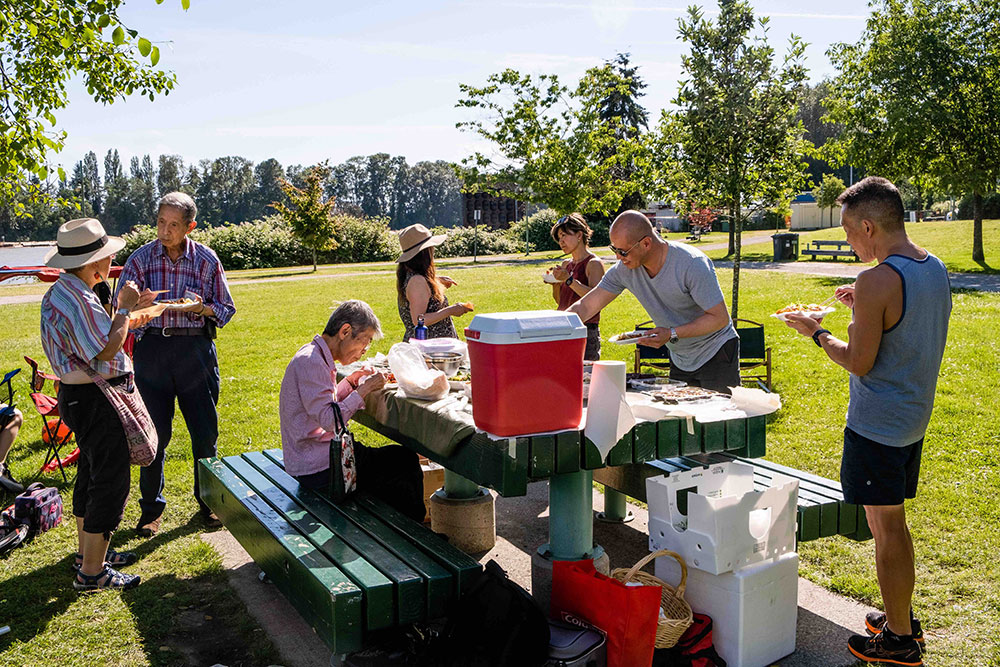
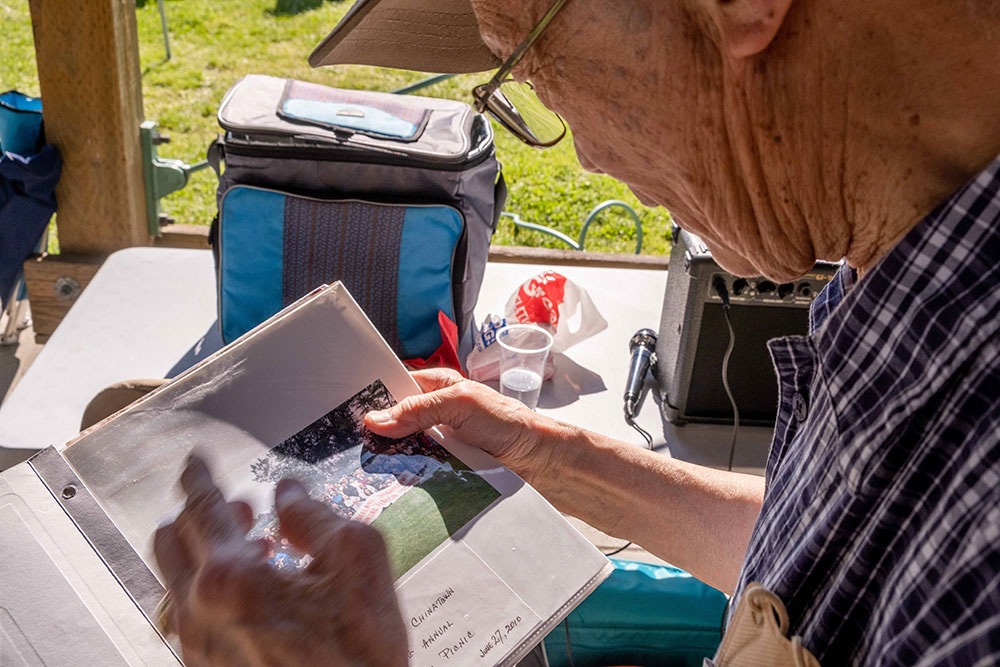
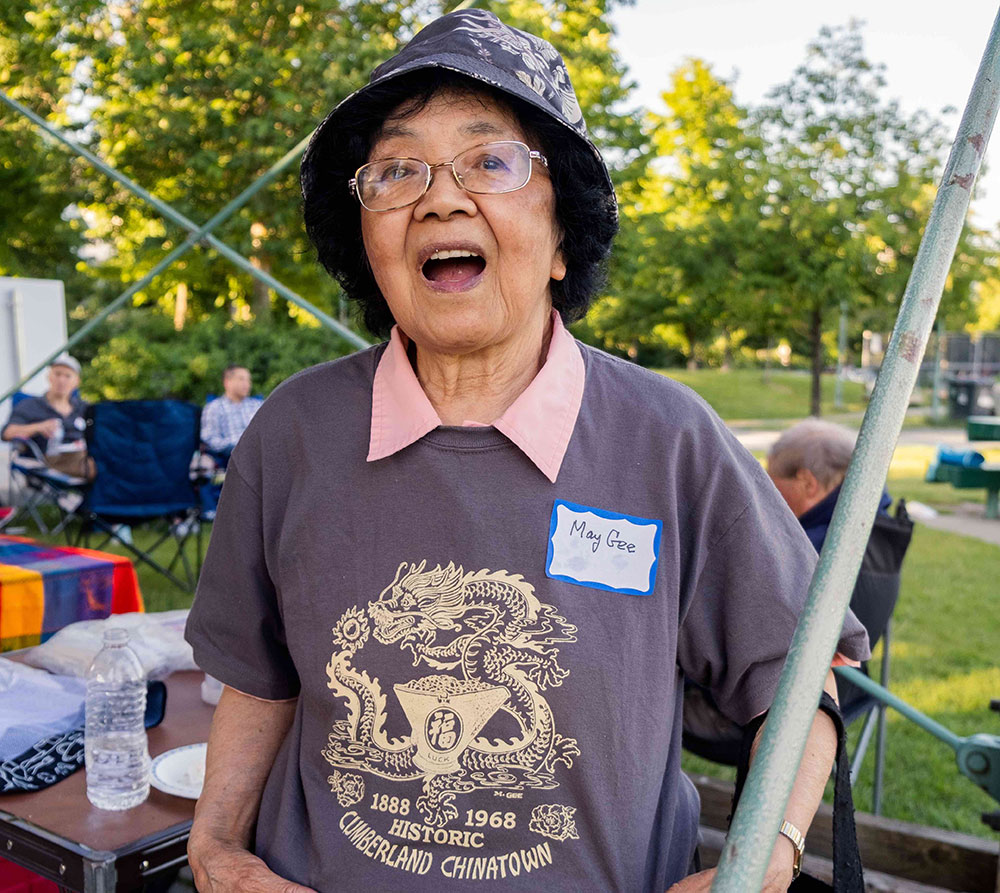
Through a pandemic, reunion
This July was affectionately referred to as the “45 + 2” picnic reuniting Cumberland’s Chinese community. The pandemic put a temporary halt to the annual gathering in 2020 and 2021. Technically, it’s the 47th annual picnic but because of the pandemic, the group hasn’t met in person since 2019.
Organizer Fred Leung kicks off the event. He stands before the crowd of close to 80, telling a story into a small speaker of how the reunions came to be. Four former Cumberland Chinatown residents — Bill Chow, Harold Lim, Ken Lowe and Kim Mah — got together in Vancouver and decided to start an annual reunion in 1973. In 1975, the first reunion picnic took place in Stanley Park. They moved to Riverfront Park in East Vancouver, where they are today, after the 2006 Stanley Park storms, and have gathered occasionally in Cumberland too.
People are attentive, but they’ve heard this before. Everyone has brought food and they’re waiting to dig in and catch up more casually. Timbits intermingle with dim sum and home-cooked goodies. The group skews towards the elderly, but there are also families and children playing in the first warm summer weekend that Vancouver has had this year. People have come from all over the province for this, the first picnic in years since the start of the pandemic. The older folks in attendance comment on how the trees have grown taller in the park since they started meeting here decades ago.
Some people are wearing custom Cumberland Chinatown T-shirts, made years ago to raise funds to build a picnic pavilion in the Cumberland Chinatown site.
Three Cumberland Museum employees were present at this year’s picnic to record oral histories, invited by organizers. They brought doughnuts from Cumberland’s village bakery and museum family passes for the community.
I’m there too, feeling slightly awkward as I slip into an intimate gathering of families that are drawing upon decades and decades of shared history. Looking around me, I start to catch a sense of why this community has kept going all these years.
‘The Chinese were nothing’
Terry Leung likes the idea of moving back to Cumberland, but it’s not his community anymore. He left to study at the University of British Columbia as a teenager and hasn’t lived there long-term since. His uncle Fred, who moved to western Ontario but came back in his later years to help organize the picnic, agrees. “There’s not much going down there now except that they are trying to restore the historic sites,” Fred told me.
The Leungs were one of the few Chinese families that were able to stay in Cumberland after the mines began shuttering during the Great Depression. The last mine closed in 1953.
Fred’s was the first family that moved out of Cumberland’s Chinatown and into Cumberland proper.
At the age of seven, John Leung — Terry’s father and Fred’s brother — started helping out in the grocery turned general store to help feed his family of 11. He took on more responsibilities when he turned 15, driving his dad’s truck around the Comox Valley for door-to-door deliveries of goods. “I worked to midnight almost every night, seven days a week,” said John.
“We were the only Chinese in our town. You had to depend on the Caucasians to make a living. That’s tough because the Chinese were stepped on,” John said.
In the Cumberland coal mines, Chinese miners were paid far less than white miners. The coal baron Robert Dunsmuir had largely paid for the head tax and passage fees for Chinese miners and provided company housing. Using eviction as a threat, Dunsmuir employed Chinese miners as strikebreakers during the great Vancouver Island coal strikes of the early 1910s amidst a wave of anti-Asian hate in B.C. at the turn of the century.
“The white inhabitants of Cumberland would come and break the store windows of Chinese-owned businesses after supper,” John remembers. “The Chinese were nothing. The names they used to call us — sickening. I still remember them.”
“But we had no choice. We grew up, hoping to survive,” said John. “Everybody was depending on me to make a living for the rest of the family before I was even 15.”
At the Leung family home, there wasn’t adequate heating and hot water. The Comox Valley Echo reported that two of John’s sisters died of pneumonia.
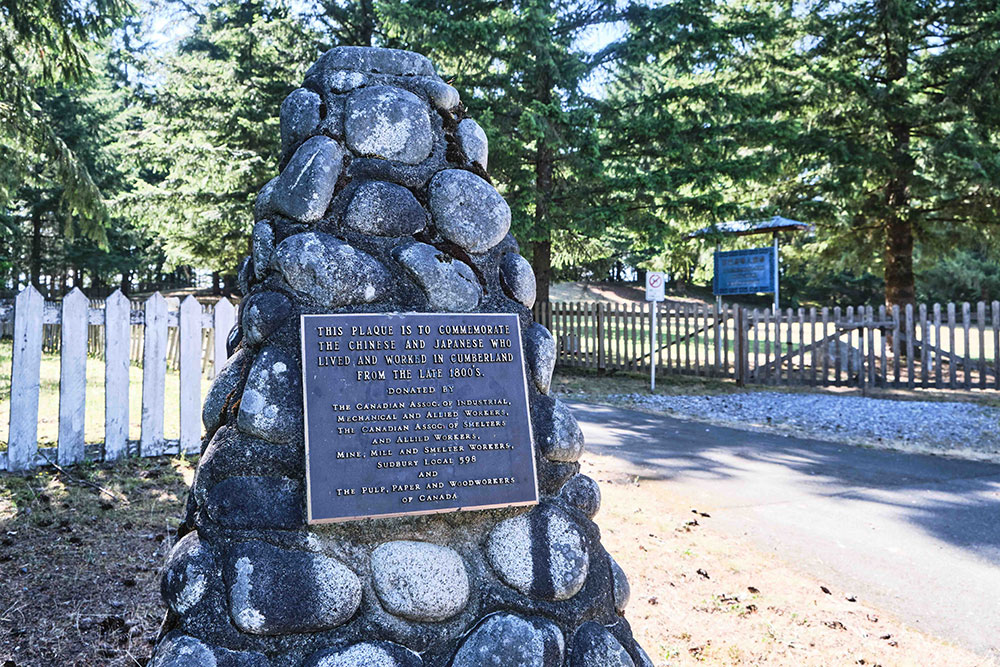
Still, it may have been better than living in Chinatown. One of the reunion picnic-goers remembers how their houses in Chinatown would flood every winter with the swollen river. Chinatown was built on a wetland, lands that nobody wanted. There were buildings on carefully raised ground, surrounded by brackish water.
The Leungs were also the last to leave. For a long time, John Leung would be the last link to Chinatown in Cumberland proper. A pillar of the Cumberland business community, John served many years as the treasurer of the Chamber of Commerce. He was named Cumberland’s citizen of the year in 1991. But ailing health caused Leung to eventually leave for Burnaby in 2014 to be closer with family.
Chinese history, revived
Looking around at its artisanal ice cream shop, plant-based bistro and craft brewery, Cumberland today is very different than what it was like after the coal mines shut down, when the village entered a long economic depression starting in the 1930s. You can still find original mining cabins near the centre of the former city’s 20th-century grid.
Chinese workers were the first to be fired in the mines. Without work, the town withered away. Chinatown didn’t hang on long after the major mines closed in the early 1920s. Half of Chinatown was destroyed by fire in 1936. Looters and vandals went through the half-abandoned buildings, looking for foreign curios to take or sell.
After a failed attempt by the village in acquiring the funds needed for preservation, the entire town was razed in 1968, save for a single cabin, which was relocated to the side of the road. A gun club used the grounds for some time. Today, a section of it serves as a disc golf course. Apart from a picnic pavilion, the rest of Cumberland’s Chinatown is now just meandering dirt trails dotted with small informational plaques.
“A lot of people are surprised coming to Cumberland about its history, that it used to be this city with a Chinatown and Japanese section of town that you’d never know if you just drove down the main street,” said curator Lia Tarle at the Cumberland Museum and Archives. “How big it used to be, and how many different communities used to be here.”
Tarle stepped into the curator role in 2020, shortly before a large renovation that saw nearly every physical aspect of the museum change. “You don’t often get to start from scratch and build up a narrative with a blank slate,” Tarle said.
In the past, the museum was focused on Cumberland’s mining and labour history, with side galleries about Cumberland’s Chinese and Japanese communities added on later. The new layout does away with that, instead ordering exhibits and information into overarching themes such as land use, industrial history, and resistance and resilience. The history of the K'ómoks peoples and the different cultural groups that have settled in Cumberland over the years is now told in one continuous experience.
That hasn’t come without its own challenges. In the textiles section, there’s a blank space to represent Cumberland’s historic African-American community instead of an item exhibit.
“They moved up from the States, and we have very little in our collection relating to that community,” said Tarle. “Some of the details around that are a bit less well known.
“That’s something that we want to work on is telling these stories of different communities, not just highlighting European Canadian history,” noted Tarle.
A museum is a place that holds stories of the past. But it’s also a place that holds space for the present, where communities can gather and engage with the complex histories of the past. More and more museums are looking to have “two-way conversations” with visitors, said Tarle — to learn about what they are interested in and what the public takes out of their exhibits.
“Engagement with communities of origin is becoming more and more important,” Tarle said. “Not just telling the stories academically from a third-party standpoint. It’s really important to learn about history through people.”
“These are their families and family history,” Tarle said.
The museum will be the first to host the nascent Chinese Canadian Museum’s first travelling exhibit, A Seat at the Table, in June 2023. The Cumberland Museum will be seeking a continuous relationship with Cumberland’s Chinatown community to better tell their stories.
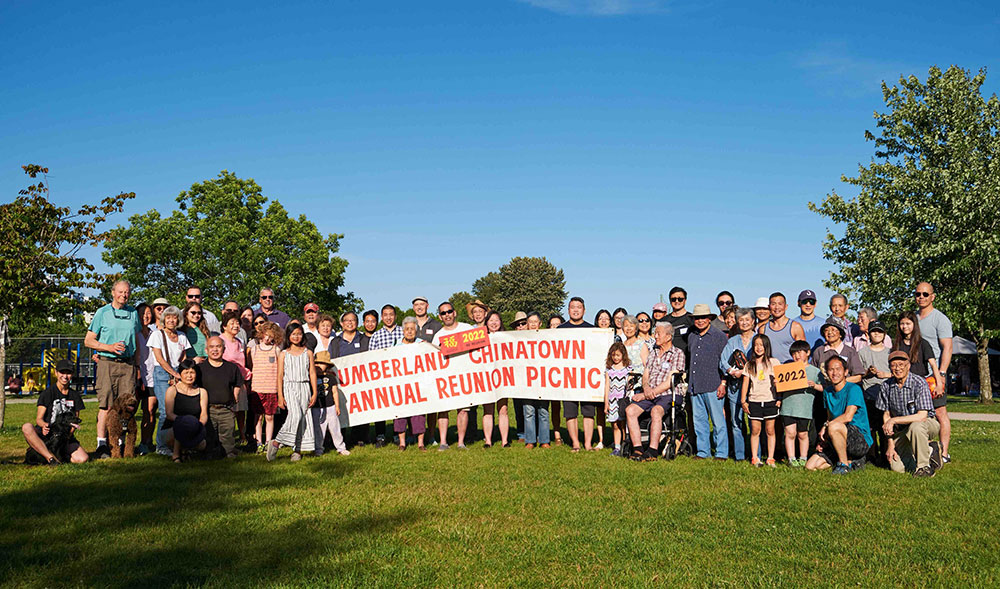
‘This is homecoming’
Imogene Lim regularly travels from her home in Nanaimo to come to the Cumberland Chinatown reunions in Vancouver. She’s been involved with Cumberland’s Chinatown group since 2001. “It’s reconnecting to your roots and knowing where you come from,” said Lim, who has roots in both Cumberland’s and Vancouver’s Chinatowns. “When you have grown up basically assimilating, it’s only when you’re older that you realize the value of where you came from, and what it means.”
“If I wasn’t connected to Cumberland, I would probably have a very different sense of who I am.” When Chinese people talk about the homelands, a common starting point is to ask what village a person is from. “Our village is Cumberland,” Lim told me.
“You are part of the group, you’re recognized. This is homecoming,” Lim added.
“I’m always thrilled to see some of the younger people that I remember being this big, and now they have finished university or who knows — and they’re still coming,” Lim said. In the past, it was the parents bringing them along. Now, it’s a choice of their own.
There’s a time-honoured tradition at reunions: the group photo is taken inevitably after some people have left. This one is no exception, especially with its geographically dispersed attendees, some who have just come in for the day.
As the adults corral children into photogenic rows, an organizer carefully unfurls a sun-cracked banner, emblazoned with the words “Cumberland Chinatown Annual Reunion Picnic.” After so many years, it’s become an artifact in its own right, he jokes.
The pictures are taken and retaken with multiple devices, everyone wanting a piece of memory to take home. Some make departures shortly after. More will stay long into the evening, keeping the memories of Cumberland’s Chinatown alive and vibrant long after the physical place has moved on. ![]()
Read more: Rights + Justice


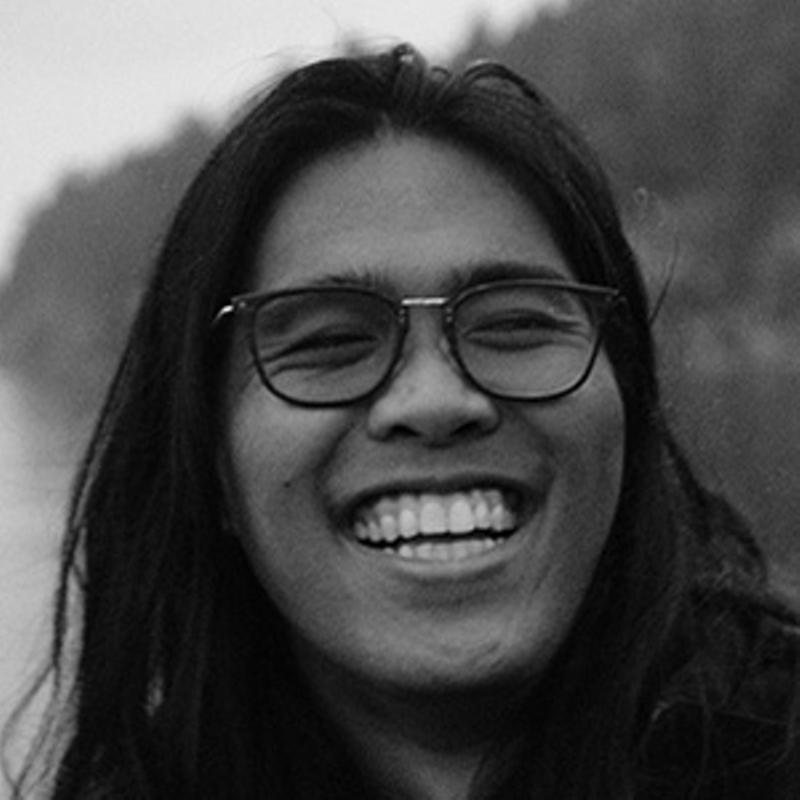

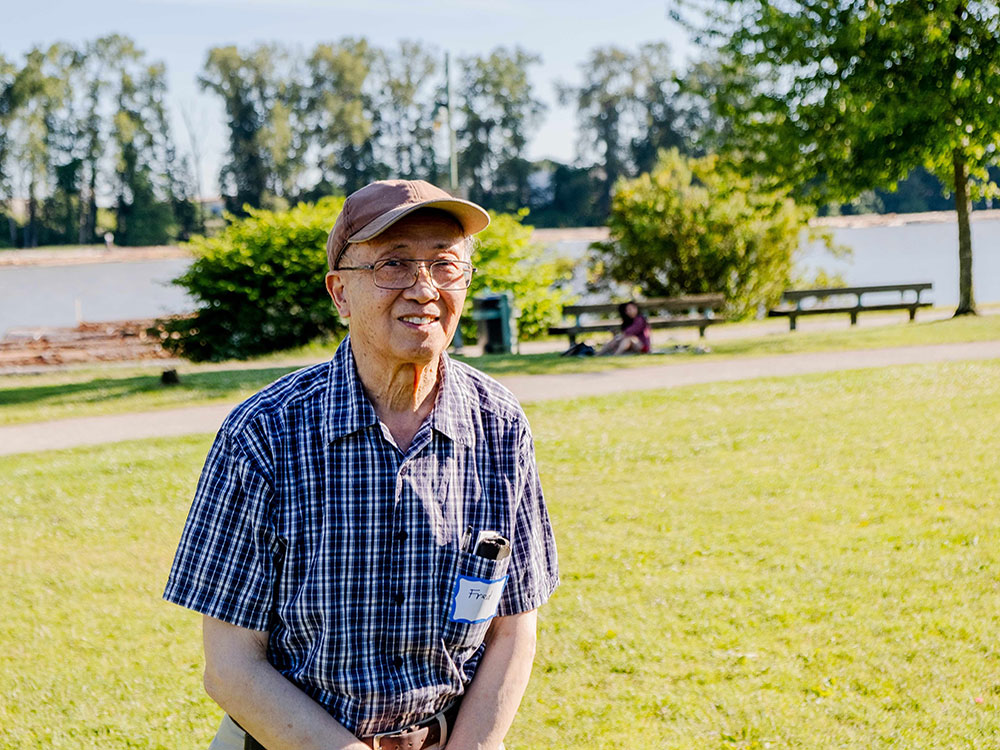












Tyee Commenting Guidelines
Comments that violate guidelines risk being deleted, and violations may result in a temporary or permanent user ban. Maintain the spirit of good conversation to stay in the discussion.
*Please note The Tyee is not a forum for spreading misinformation about COVID-19, denying its existence or minimizing its risk to public health.
Do:
Do not: